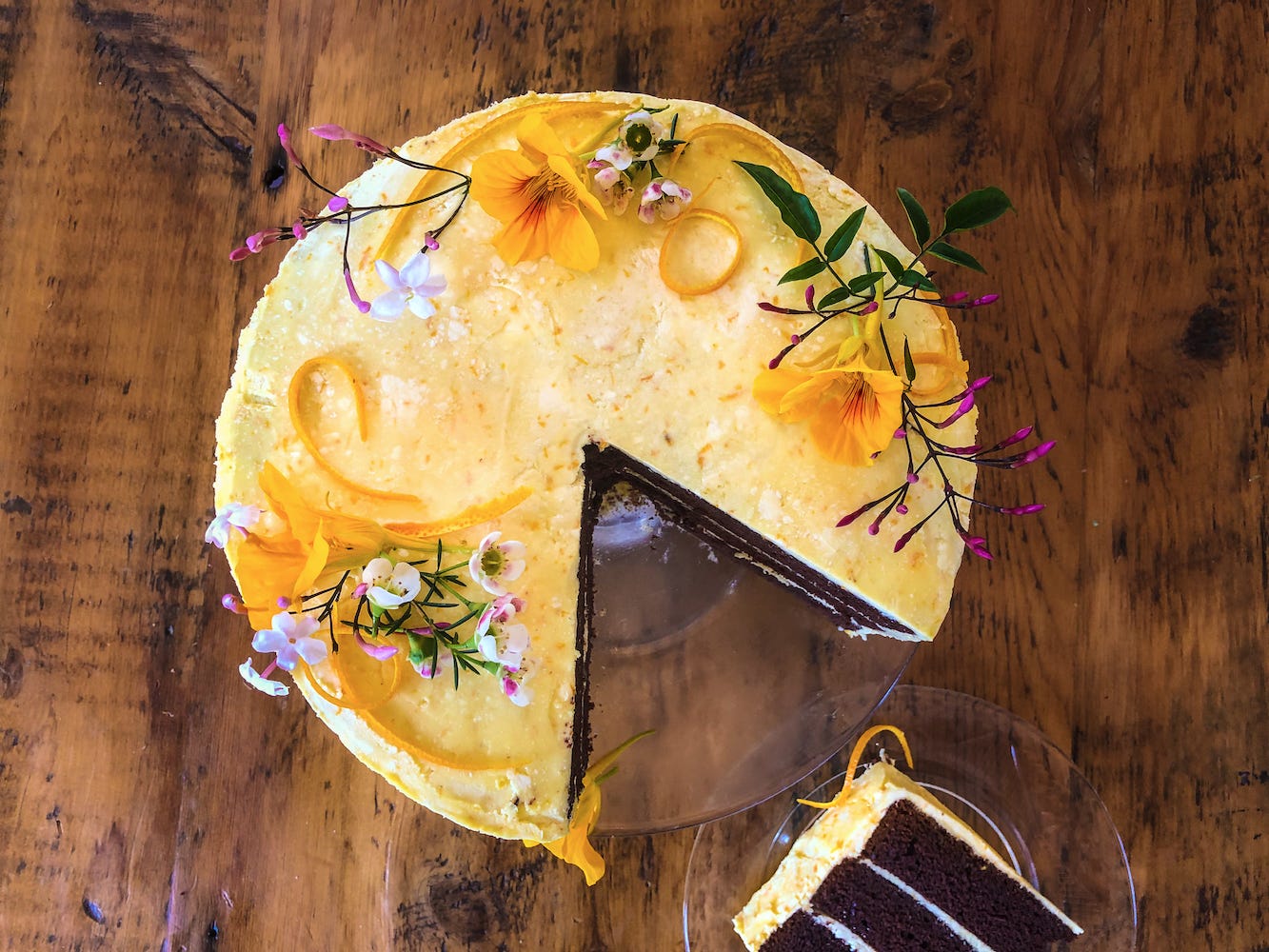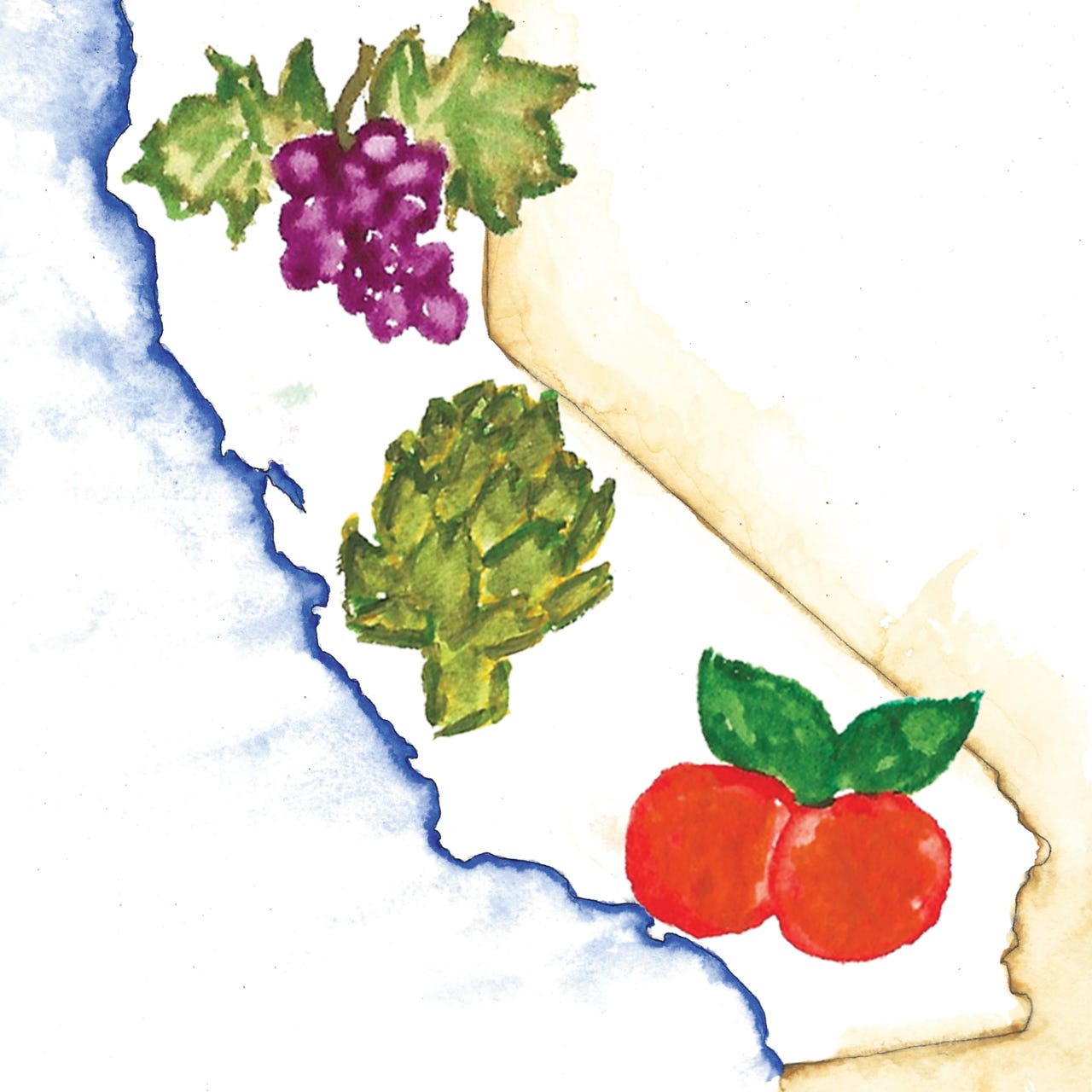We’re doing something new today! I had originally planned to run another interview with a home cook this week, but, unfortunately, I had to postpone because the subject of the piece was feeling under the weather. While I will share her story soon (along with a her great recipe for paneer kati rolls!), the unexpected opening in the schedule pushed me to add something to this newsletter that I’ve been thinking about for a while: recipe posts! Going forward, I’ll continue to share home cooks’ stories through interviews, but I’ll also share stand-alone recipes from time to time.
Most of the recipes I publish will come from the same home cooks I’m profiling or have profiled in the past. But for this first post, I’m turning to my own history as a Californian and a cook and sharing a birthday cake from my childhood. I hope you enjoy it!
Before we get started, some more news: You can now read The California Table in the new Substack app for iPhone. With the app, you’ll have a dedicated Inbox for my Substack and any others you subscribe to. The Substack app is currently available for iOS. If you don’t have an Apple device, you can join the Android waitlist here.
Chocolate Cake with Orange Buttercream Frosting
Is there anything more Californian than a backyard orange tree? When I was growing up, we had a tall, somewhat ancient one right in the middle of our yard. The fruit had very thin skin and very tender flesh, and my siblings and I spent countless afternoons sitting in the tree, covered with the sticky juice.
Those oranges also had the most wonderful, fragrant peels I’ve ever smelled, and every year my mom would use the fruit’s zest to make a chocolate cake with orange buttercream frosting. The combination of rich chocolate and bright, aromatic orange oil was pure magic, and everyone looked forward to that cake all year.
The version below is my take on my mom’s original recipe (or recipes, as I’m pretty sure she changed hers frequently in the search for the perfect flavor combination). I’ve incorporated some simple, chefy tricks that I learned working on a baking cookbook a few years ago—steps like freezing the cake layers to keep them from crumbling when you cut into them—and I’ve added a little more orange with a flavored simple syrup. The real key to this recipe, however, is buying oranges with fragrant peels. When you’re in the market, don’t be afraid to scratch the zest a little with your finger and take a sniff; find an orange that you like the smell of, and you’ll love it in your cake.
Makes 9” cake
Total Cook Time: 3 hours, plus 3 hours (or longer) to chill the elements and the finished cake
Active Cook Time: 2 hours
For the Cake
2 1/4 sticks (2 cup + 2 tablespoons) unsalted butter, at room temperature, plus more for greasing the pans
3 1/2 cups light brown sugar
6 large eggs, at room temperature
2 teaspoons vanilla extract
3 cups cake flour
1 cup Dutch-processed cocoa powder
1 tablespoon baking soda
1/2 teaspoon kosher salt
1 1/2 cups milk, at room temperature
1 1/2 cups sour cream
Orange Buttercream
4 large eggs
1 cup granulated sugar
4 sticks (2 cups) unsalted butter, at room temperature
3 oranges, with fragrant peels, washed
For the Simple Syrup
1/2 cup granulated sugar
1/2 cup water
Juice of 1 orange (from one of the oranges you zest for the buttercream)
For Decorating
Flowers and orange zest
Special Tools
Stand mixer (or hand mixer)
3 9-inch cake pans (ideally high-sided)
Parchment paper
Candy thermometer
Whisk
Microplane zester or box grater
Bread knife
Pastry brush
Plastic wrap
Make the Cake
In a stand mixer (or a large bowl, with a hand-mixer), beat the butter and brown sugar together for 3 minutes, until the mixture is light and fluffy and the grains of sugar have started to melt into the butter. Use a rubber spatula to scrape down the beater and the sides of the bowl.
Add the eggs and vanilla to the mixer, and beat on medium until they are just incorporated, about 30 seconds.
Sift the flour, cocoa, baking soda, and salt together into a medium bowl.
Add 1/3 of the flour mixture to the mixer and beat on low until just combined. Add half of the milk, and beat until just combined. Repeat with another 1/3 of the flour, the rest of the milk, and then the remainder of the flour. Scrape down the beater and the sides of the bowl.
Add the sour cream, and beat everything on low until just incorporated. Scrape the sides of the bowl and mix by hand to remove any streaks.
Preheat the oven to 350°.
Cut circles of the parchment paper to fit into the bottom of the cake pans. Butter the bottoms and sides of the pans, fit the parchment circles into the pans, and butter the tops of the parchment.
Divide the batter between the three pans, and smooth it out. Bake the cake until a paring knife inserted into their centers comes out clean, 45-50 minutes.
Let the cakes cool to room temperature, remove them from the pans, remove the parchment, and wrap them in plastic wrap. Freeze the layers for at least 1 hour.
Make the Buttercream
In a tall, narrow pot, bring 2” of water to a boil. Fit a stand mixer with the whisk attachment (or prepare a hand mixer).
Put the eggs and sugar in the bowl of a stand mixer (or a heat-proof bowl, if using a hand mixer), and set the bowl over the boiling water. Attach a candy thermometer, and heat the eggs, whisking frequently, until they come to 160°.
Remove the egg mixture from the heat immediately, and whisk on high until the eggs have completely cooled, about 5 minutes. (If you’re using a metal bowl; put your hand on the side of the bowl to check the temperature.)
Turn the mixer to medium, and add the butter 1-2 tablespoons at a time. Use a microplane zester or the small side of a box grater to grate the orange zest directly into the bowl. Add the vanilla, and beat until combined. Turn the mixer to high, and beat the frosting for a minute, to remove any lumps.
Refrigerate the frosting to help it firm up just a bit before using. (If you want to refrigerate it for longer, just reheat it a bit in the microwave before using, and beat it vigorously with a butter knife or offset spatula to make sure it’s smooth and soft enough to use.)
Make the Simple Syrup
Put the sugar and water into a small pot. Heat the mixture, stirring occasionally, until the sugar has dissolved.
Remove the pot from the heat, and add the orange juice. Allow the syrup to cool before using.
Assemble the Cake
Remove the cake layers from the freezer, and use a bread knife to cut the domed tops off of each one, to create a flat surface. (If the cake is frozen solid, let it warm up enough that you can cut through it safely.)
Put a tablespoon of the buttercream in the center of your serving plate, and place a layer of cake on top of it, bottom down. Brush the layer generously with simple syrup, then wait a minute to let it soak in. Spread a 1/4” layer of buttercream on top of the layer.
Place another layer of cake on top of the buttercream, and repeat the syrup and buttercream steps above.
Place the last layer of cake on top, but flip it upside town, so the bottom (the flat side that was in the pan) is on top; this will create a nice, flat surface. Wrap the cake in plastic wrap, and refrigerate it for at least 1 hour, so that the frosting between the layers firms up, stabilizing the cake.
Frost the sides and top of the cake, and decorate it as you like. Refrigerate the cake for another hour or so before cutting into it.
More California Stories and Recipes
Looking for something to eat before you get to the cake? The New York Times ran J. Kenji López-Alt’s wonderful version of San Francisco’s classic garlic noodles earlier this month, and the recipe is definitely a keeper! If you’re looking for a meal full of spring greens, check out Ben Mims’ collection of recipes using fistfuls of greens in the LA Times. Or, if you’d rather go out, check out NYT’s fascinating article about California’s unique barbecue styles (and the cooks who are making the form their own).
Photos: Georgia Freedman






